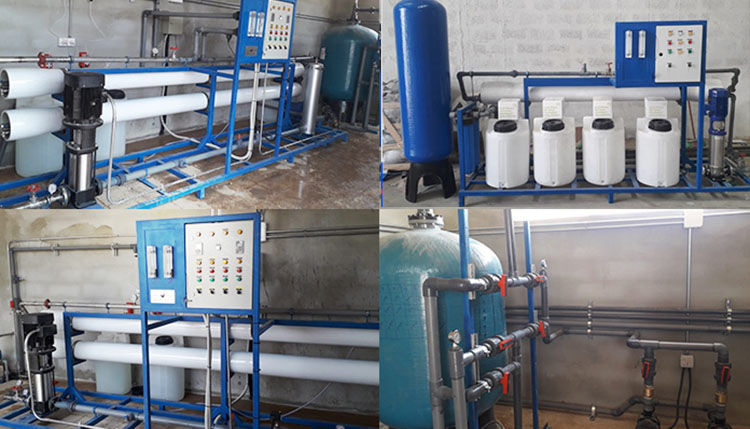
How do I get a reverse osmosis plant?
To get a suitable reverse osmosis plant for your needs, you should read this article. One of our priorities in water care is to raise quality standards.
Look for station types
The type of station varies based on many factors:
- The type of water intake, so water quality tests must be conducted to find out the types of contaminants. You can request laboratory testing service with us from here.
- Determine the exact amount of water expected to be obtained.
- Determine the purpose of use.
- Studying the types available in the market and the availability of spare parts.
Find the right company
The market is filled with many options, so you must make sure that these items are available:
- Provide periodic maintenance service and follow-up appointments.
- Ease of providing spare parts.
- The possibility of updating the station based on changing needs with time.
- Accessible communication with technicians.
- Experience in the field with various types of clients.
Basics of operation and maintenance of reverse osmosis plants
Basic maintenance works for desalination plants consist of the following:
- Periodic maintenance and follow-up of the status of the booster pumps, in addition to cleaning them and preventing leakage.
- Lubricating and lubricating pumps and motors, if necessary, according to the program approved by the manufacturers.
- Washing and rinsing of media, sand & carbon filters on a daily or weekly basis, according to the quality of the raw feed water.
- Replace micron filters (cartridges) every eight weeks.
- Ensure that measuring devices are read and adjusted if necessary, whether mechanically or with special solutions.
- Maintaining sufficient quantities of chemicals in the tanks for the pre-and post-treatment phases.
- Probing the inspection of membranes.
- Recording readings and results of water tests on a daily basis and presenting them to specialists to understand changes, address weaknesses, and anticipate the occurrence of any emergency problems.
- Inventory of chemicals, consumables, and spare parts, and request what is missing from them.
Types of reverse osmosis membranes
Membranes come in several types, the most important being spiral wound and hollow fine fiber tissue membranes.
All these films are made of Cellulose Acetate, Aromatic Polyamides, or, as is the case today, Film Polymer compounds.
These membranes also remove more than 75 percent of salts, in addition to most types of organisms, viruses, germs and other chemical pollutants.
Pores of different types of films range from less than 10 angstroms to 100 microns.
The following is a brief description of the advantages of each type
CELLULOSEACETATE
- Tolerance to chlorine.
- Not resistant to bacteria.
- The pH ranges between 6 and 8.
- Good water production rate.
- It must be used with water containing a certain percentage of chlorine.
- One of the most common types of membranes in the market.
CELLULOSE TRI-ACETATE
- Tolerance to chlorine.
- It tolerates many types of bacteria.
- The pH ranges between 4 and 8.
- Excellent water production rate.
- The use of water containing chlorine prolongs its life.
THIN FILM COMPOSITE
- Sensitive to chlorine, which must be removed before the water reaches the membranes.
- Antibacterial.
- The pH ranges from 3 to 11.
- One of the most water-producing types of membranes.
- High salt rejection property.
- Long years of service if the correct operating specifications are met.
If the article does not answer all your inquiries, we are pleased to communicate with you here.
























